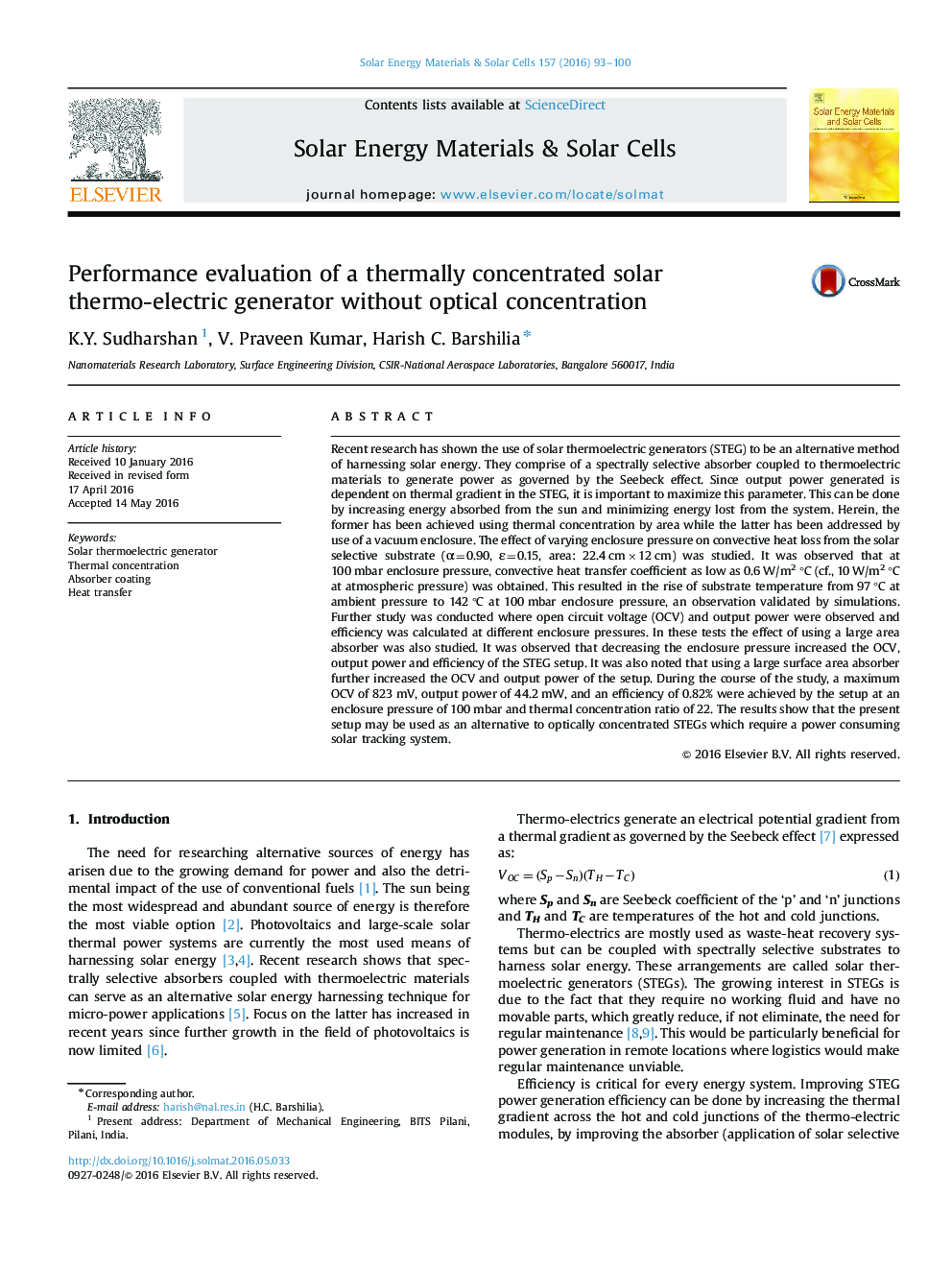| کد مقاله | کد نشریه | سال انتشار | مقاله انگلیسی | نسخه تمام متن |
|---|---|---|---|---|
| 6534545 | 49277 | 2016 | 8 صفحه PDF | دانلود رایگان |
عنوان انگلیسی مقاله ISI
Performance evaluation of a thermally concentrated solar thermo-electric generator without optical concentration
ترجمه فارسی عنوان
ارزیابی عملکرد یک ژنراتور حرارتی با انرژی حرارتی متمرکز بدون غلظت نوری
دانلود مقاله + سفارش ترجمه
دانلود مقاله ISI انگلیسی
رایگان برای ایرانیان
کلمات کلیدی
ژنراتور ترموالکتریک خورشیدی، غلظت حرارتی، پوشش جذب، انتقال گرما،
موضوعات مرتبط
مهندسی و علوم پایه
مهندسی شیمی
کاتالیزور
چکیده انگلیسی
Recent research has shown the use of solar thermoelectric generators (STEG) to be an alternative method of harnessing solar energy. They comprise of a spectrally selective absorber coupled to thermoelectric materials to generate power as governed by the Seebeck effect. Since output power generated is dependent on thermal gradient in the STEG, it is important to maximize this parameter. This can be done by increasing energy absorbed from the sun and minimizing energy lost from the system. Herein, the former has been achieved using thermal concentration by area while the latter has been addressed by use of a vacuum enclosure. The effect of varying enclosure pressure on convective heat loss from the solar selective substrate (α=0.90, ε=0.15, area: 22.4 cmÃ12 cm) was studied. It was observed that at 100 mbar enclosure pressure, convective heat transfer coefficient as low as 0.6 W/m2 °C (cf., 10 W/m2 °C at atmospheric pressure) was obtained. This resulted in the rise of substrate temperature from 97 °C at ambient pressure to 142 °C at 100 mbar enclosure pressure, an observation validated by simulations. Further study was conducted where open circuit voltage (OCV) and output power were observed and efficiency was calculated at different enclosure pressures. In these tests the effect of using a large area absorber was also studied. It was observed that decreasing the enclosure pressure increased the OCV, output power and efficiency of the STEG setup. It was also noted that using a large surface area absorber further increased the OCV and output power of the setup. During the course of the study, a maximum OCV of 823 mV, output power of 44.2 mW, and an efficiency of 0.82% were achieved by the setup at an enclosure pressure of 100 mbar and thermal concentration ratio of 22. The results show that the present setup may be used as an alternative to optically concentrated STEGs which require a power consuming solar tracking system.
ناشر
Database: Elsevier - ScienceDirect (ساینس دایرکت)
Journal: Solar Energy Materials and Solar Cells - Volume 157, December 2016, Pages 93-100
Journal: Solar Energy Materials and Solar Cells - Volume 157, December 2016, Pages 93-100
نویسندگان
K.Y. Sudharshan, V. Praveen Kumar, Harish C. Barshilia,
